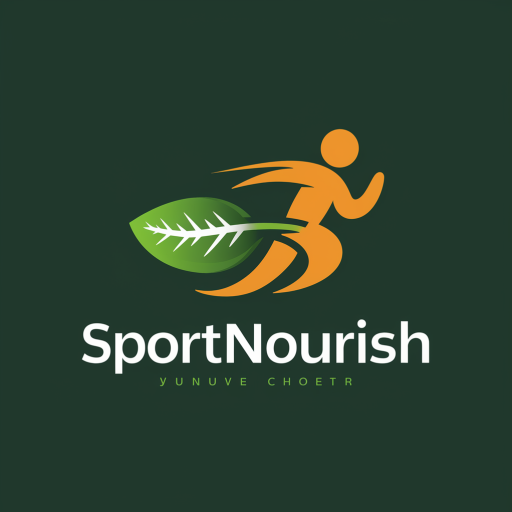Mastering Your Gym Session: The Ultimate Guide to Pre-Workout Nutrition
You’re lacing up those trainers, ready to crush your workout. But wait, have you fuelled your body right? Understanding pre-workout nutrition can be a game-changer. It’s not just about what you eat, but when you eat it. Let’s debunk the myths and cut through the fads to give you the facts.
The Importance of Pre-Workout Nutrition
Fueling your body correctly before a workout session carries significance beyond measure. Now, let’s investigate deeper and uncover the reasons and the science behind this crucial concept.
Why Does Pre-Workout Nutrition Matter?
There’s no denying – pre-workout nutrition holds a big key to your performance. For instance, imagine your body as a high-performance car. Can it run smoothly without fuel? Undoubtedly, it can’t. Similarly, your body needs fuel, in the form of food, to perform at its peak. Skipping this step could impede energy levels, limit workout performance and delay recovery.
A Scientific Overview of Pre-Workout Nutrition
Pre-workout nutrition is more than just devouring food before exercise; it’s about timely consumption of balanced, nutrient-dense food. Think of nutrients as tools, each having a unique role. Carbohydrates, for instance, act like fuel. They provide you with energy to crush your workouts. Protein, differently, focuses on muscle repair and growth. Fats, commonly overlooked, also play a role by supporting energy function for longer, less intense workouts. Eating the right food, at the right time, can turn your workout from ordinary to extraordinary.
Breaking Down Pre-Workout Nutrition Guidelines
Jump into the essentials of pre-workout nutrition, exploring the role of specific nutritional components and their influence on your workout and recovery.
The Role of Carbohydrates
Carbohydrates, the body’s primary source of energy, play an integral role in pre-workout nutrition. Consuming complex carbohydrates, such as whole grains and fruits, provides a steady energy supply during workouts. Intake of these carbohydrates, according to the American College of Sports Medicine, optimises glycogen stores, promoting sustained energy levels and improving workout performance.
The Benefits of Protein
A steady protein intake ensures muscle repair and growth. Consuming protein before a workout reduces muscle protein breakdown, improves recovery, and enhances overall performance. A study published in the Journal of International Society of Sports Nutrition found that consuming 20-30g of protein pre-workout could significantly improve muscle recovery and growth, thereby highlighting protein’s importance.
Hydration: How Much Water is Enough?
Hydration is key for proper bodily functions. Being dehydrated can impact workout capacity and recovery. The National Academy of Sports Medicine recommends drinking at least 470ml of water, around two hours before the workout. It’s pivotal to remember, hydration isn’t just about water but also replenishing electrolytes lost during sweat. Hence, a smart move would be drinking water-rich foods or including a sports drink if the workout lasts longer than an hour.
Tips for Tailoring Pre-Workout Nutrition to Your Training Goals
In this section, we’ll reveal how adjusting pre-workout meals to suit specific training objectives can effectively enhance workout performance.
Pre-Workout Nutrition for Muscle Gain
When training to build muscle, it’s beneficial to incorporate a protein-rich pre-workout meal. Consuming a blend of fast and slow absorbing proteins 30 minutes before exercise promotes muscle protein synthesis. For instance, combining whey protein, a fast-digesting source, with casein protein, slower to digest, enhances muscle upkeep during training. Besides, a moderate intake of carbohydrates maintains high energy levels, providing fuel for intense weight training sessions.
Pre-Workout Nutrition for Fat Loss
Targeting fat loss requires a slight switch in your pre-workout nutrition game plan. Limiting carbs and putting emphasis on proteins keeps the body in fat-burning mode. For instance, opting for a meal with lean protein sources like chicken, turkey or tofu, paired with a low-glycemic carbohydrate such as vegetables, grants a slow and steady release of energy while preserving muscle mass.
Pre-Workout Nutrition for Endurance Sports
Endurance athletes need a different pre-workout nutrition strategy. High carbohydrate intake is a highlighted recommendation; this fills glycogen stores, ensuring sustained energy throughout long, strenuous workouts. For example, consuming a meal comprising a mix of simple and complex carbohydrates, like a bowl of oats with bananas, promotes lasting energy release and aids in preventing mid-workout fatigue.
Conclusion
So there you have it. Pre-workout nutrition isn’t just about what you eat but when you eat. It’s about fuelling your body like a high-performance car to maximise energy and performance. Remember, carbohydrates are key for glycogen stores, proteins aid muscle repair, and hydration maintains electrolyte balance. Your pre-workout nutrition should align with your training goals whether it’s muscle gain, fat loss, or endurance sports. Don’t be fooled by myths like ‘fasted training’ and the supposed necessity of pre-workout supplements. Exercising on an empty stomach doesn’t necessarily burn more fat – it’s all about maintaining a total calorie deficit. Pre-workout supplements aren’t always necessary if your diet is balanced. Your body is unique, listen to it and fuel it right for optimal performance.

:max_bytes(150000):strip_icc()/VWFit-Meal-Plan-Journey-1-Week-Healthy-and-Balance-Meal-Plan-6ee43578918947a4b687922d614f2be3.jpg)
